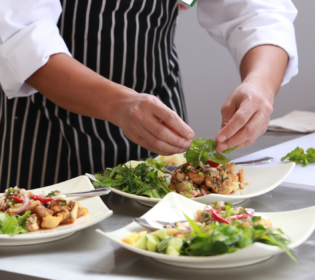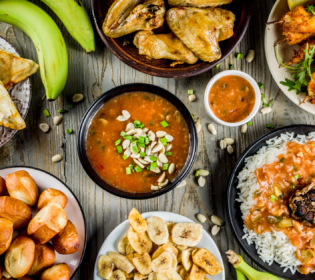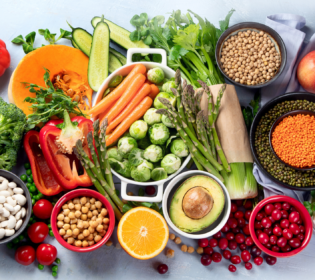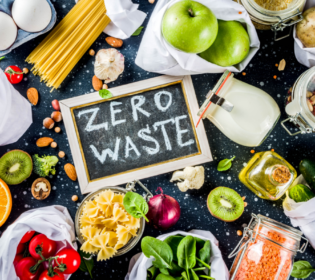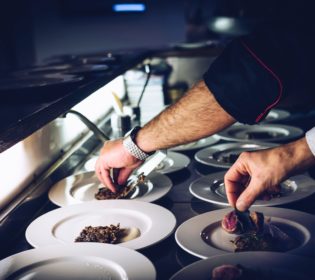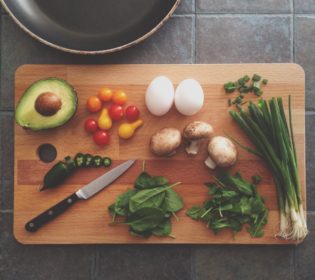Top 8 Ways to Reduce and Cut Food Costs for Restaurants

Managing food costs effectively isn’t just part of the restaurant business – it’s essential to survival and success. As profit margins tighten, understanding how to strategically reduce and control food costs can be the difference between thriving or shutting your doors. From purchasing decisions to menu design, every choice you make impacts your bottom line.
The Wholesale Club has gathered some of our proven strategies to help – these tips not only minimize food expenses but also enhance operational efficiencies so your restaurant can run better! Whether you’re a seasoned pro or new to the industry, these insights are sure to empower you to make smarter, more sustainable decisions to support your business longevity.
1. Leverage Bulk Purchasing
Bulk purchasing is an essential strategy for any restaurant looking to reduce food costs effectively. By investing in larger quantities you can secure lower unit prices, which translate into significant long-term savings.
Wholesale Club offers a wide array of bulk products, ideal for restaurants that use staple ingredients in high volumes. Plan to utilize these bulk items not only to reduce the cost of goods but also to streamline your supply chain. Reduced delivery frequencies, for example, cut down on transportation costs and minimize the handling required, further economizing your operations. Consider the shelf life and storage requirements to maximize the benefits of bulk buying.
We encourage you to reach out to your local Wholesale Club store or business development representative to inquire about special bulk pricing for large orders. We are committed to working with our restaurant partners to find the best solutions that meet your unique needs and help optimize your purchasing strategy.
2. Optimize Inventory Management
Optimal inventory management ensures that every ingredient purchased is used efficiently, reducing waste and spoilage. Implementing a system like FIFO (first-in-first-out) is crucial; it ensures that ingredients that arrive first are used first, thereby reducing the risk of expiration.
Utilize technology such as inventory management software to keep precise track of stock levels, expiration dates, and consumption patterns. Regular inventory checks can help adjust orders to better match your restaurant’s demand, ensuring that you maintain just enough stock to meet your needs without excessive waste.
3. Utilize Seasonal Ingredients
Seasonal ingredients are not only more affordable but often boast superior flavour, enhancing your menu’s appeal. Wholesale Club’s selection of seasonal produce provides an opportunity to adapt your menu in alignment with the seasons, which can also pique customer interest and drive traffic.
Design your menu to be flexible, allowing for the use of these ingredients when they are at their peak and most cost-effective. This approach not only improves the quality of the dishes served but also aligns with sustainable practices, appealing to eco-conscious consumers.
4. Conduct Waste Audits
A waste audit is a detailed analysis of where and why food is wasted in your restaurant. This process involves recording all waste over a designated period—including pre-consumer waste like trimmings and spoiled food, and post-consumer waste from customer plates. Analyzing this data helps identify patterns and problem areas like over-preparation or incorrect portion sizes.
Solutions might include adjusting recipe specifications, improving storage techniques, or retraining staff on portion control. Regular waste audits can also significantly reduce unnecessary food costs by pinpointing exact waste sources and providing actionable insights for avoiding the same mistakes in the future.
5. Train Your Staff in Waste Reduction
Educating your team on effective waste reduction is essential for minimizing food costs. Proper training should include best practices in handling ingredients to extend their shelf life, precise portioning to prevent over-preparation, and mastering cooking techniques that maximize the use of all parts of an ingredient. Organize regular training sessions to keep these practices fresh in the minds of your staff.
You could also consider implementing incentives for staff who consistently demonstrate cost-saving behaviours. This not only fosters a culture of efficiency and accountability but also significantly reduces the likelihood of costly errors. Engaged, well-trained employees are more likely to perform their roles effectively, contributing to overall cost reductions and increased profitability.
6. Monitor Your Food Costs Regularly
Consistent monitoring of food costs is critical to ensure your restaurant operates profitably. Regularly track and analyze your expenditures on ingredients and compare these figures to your sales data to gauge your cost efficiency. This analysis should influence decisions regarding menu pricing, ingredient purchasing, and portion control.
Implementing a routine review process on a weekly or monthly basis will help you spot trends such as seasonal cost fluctuations or unexpected spikes in prices. This proactive approach allows you to adjust your operations, maintaining financial health and avoiding potential costs that could affect your bottom line.
7. Cross-Utilize Ingredients Across Your Menu
Using the same ingredients across various dishes is a strategic approach that enhances menu diversity while minimizing waste and ingredient costs. This practice not only simplifies inventory management but also boosts ingredient turnover, reducing the chance of spoilage.
For instance, a versatile vegetable like bell peppers can be used in salads, stir-fries, and pizza toppings. Explore culinary techniques that allow you to use ingredients in different forms—such as raw, cooked, or as part of a sauce—to appeal to a broader customer base. The key is to creatively blend these ingredients into multiple menu items without compromising the uniqueness and flavour of each dish.
8. Offer Specials to Move Excess Inventory
Creating specials to manage excess inventory is an effective tactic to prevent waste and attract customers. This strategy allows you to incorporate ingredients that need to be used promptly into new, appealing dishes that can be offered at a promotional price.
Assess your inventory regularly to identify which items need to be prioritized and devise specials around these ingredients. This not only aids in reducing waste but also injects novelty into your menu, which can draw in both regulars and new guests. Marketing these specials through social media or your restaurant’s website can enhance customer engagement and drive traffic, turning potential losses into profit.
At Wholesale Club, we understand the challenges restaurateurs face in managing food costs effectively. That’s why we are committed to providing you with not only the best bulk purchasing options but also the insights and strategies to use those resources wisely. Visit Wholesale Club in-store or online today and see how we can help you cut costs and enhance your operations!





